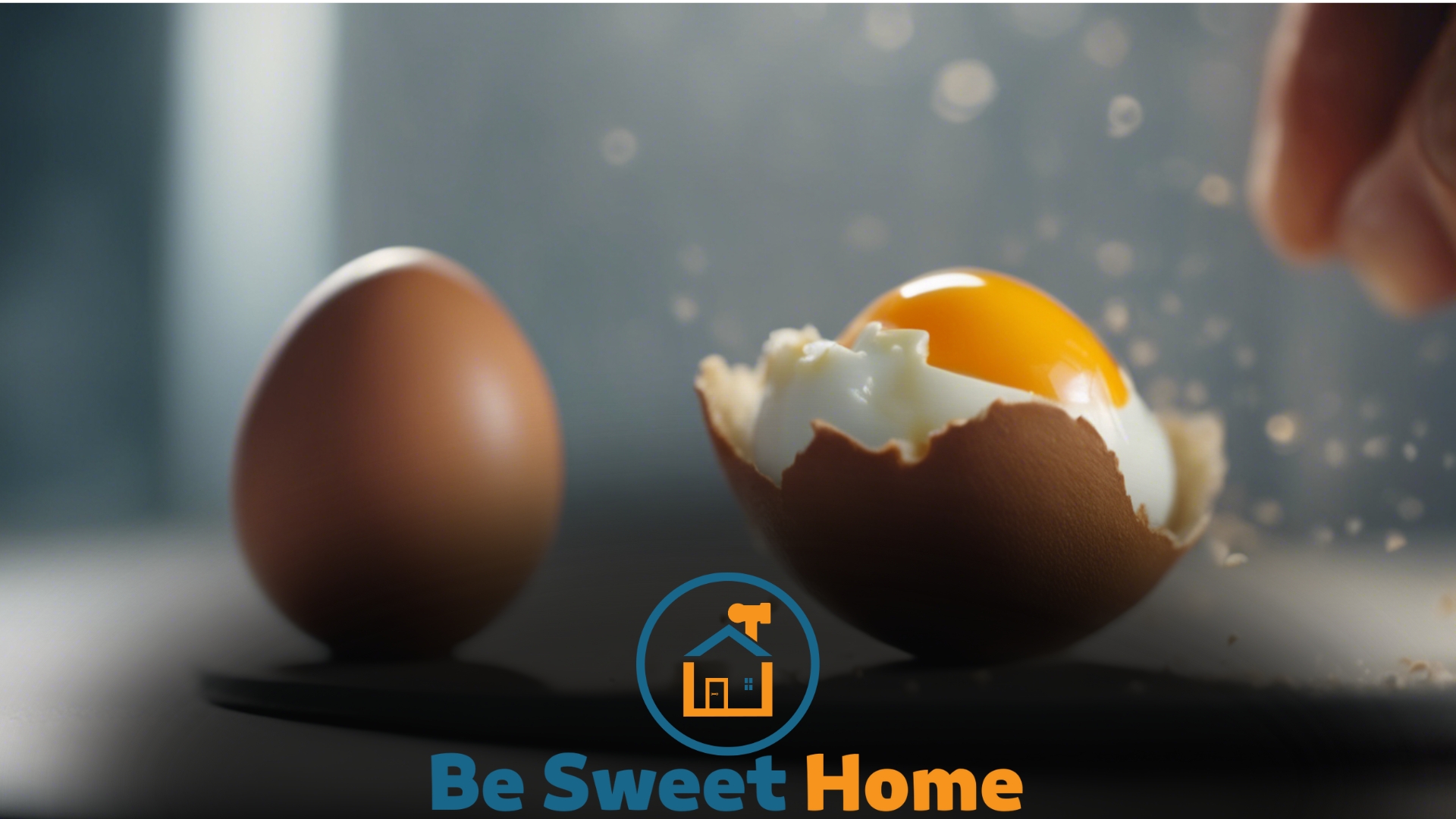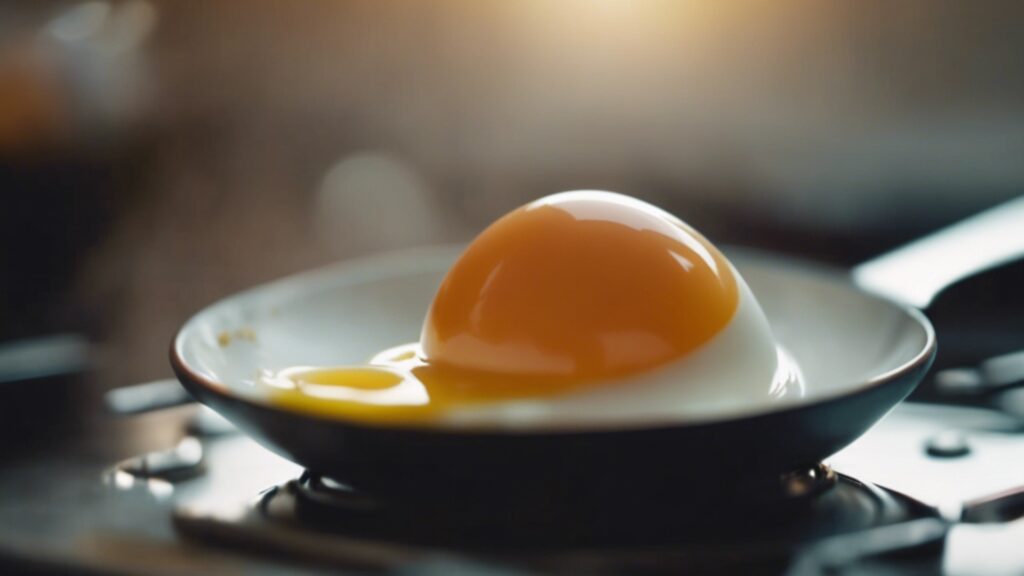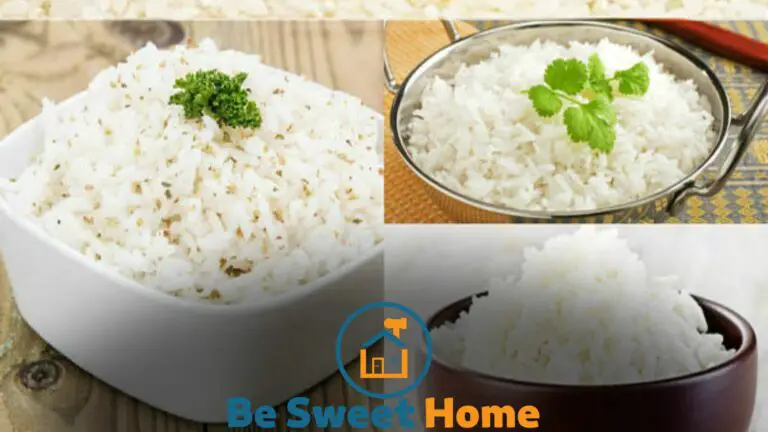

To avoid common pitfalls in cooking eggs, use fresh eggs and control the heat carefully. Avoid overcooking by timing your cooking precisely.
Mastering the art of egg cooking can elevate a simple dish into a culinary delight, but it’s a task often marred by seemingly trivial mistakes.
From the breakfast table to dinner feasts, eggs play a pivotal role in global cuisines.
Ensuring your eggs are fresh is the first step to a good dish, as older eggs can spread out and become watery when cooked.
Controlling the cooking temperature is crucial—too high, and your eggs will become rubbery; too low, and they will fail to set.
Timing is everything; whether boiling, frying, or scrambling, keeping an eye on the clock can prevent a deliciously runny yolk from turning into a crumbly disappointment.
Stick to these tips, and your egg dishes will consistently turn out just how you want them.
The Perfect Egg Adventure


Welcome to The Perfect Egg Adventure, where the humble egg takes center stage. Follow these steps to avoid common cooking missteps.
Choosing the Right Eggs
Embarking on your egg journey begins at the store. Not all eggs are equal. Always look for freshness.
- Check the date: Fresh eggs are tastier and easier to work with.
- Assess the shell quality: No cracks or odd shapes ensure a good egg.
- Organic or not?: Decide based on your preference and budget.
Storing Eggs Safely
Proper storage is vital to maintaining egg quality. Here’s how to do it right:
Temperature matters: Cold temperatures keep eggs safe. Store eggs in their carton inside the fridge, not on the door.
Here’s a chart to help track egg freshness:
| Place | Temperature | Freshness Duration |
|---|---|---|
| Refrigerator | 4°C (39°F) | Up to 5 weeks |
| Room temperature | 20°C (68°F) | 2 hours max |
Follow these steps for flawless eggs every time. Let the adventure begin!
Prep Work: Setting Up for Success
Embarking on the journey of cooking perfect eggs starts with effective prep work. Setting up for success is crucial for avoiding pitfalls in egg cooking.
The initial steps are pivotal for the result, whether a fluffy omelet or a soft-boiled delight.
Room Temperature Strategy
Starting with eggs at room temperature can impact how they cook. Cold eggs straight from the fridge often cook unevenly.
When boiled, eggs can also crack. Let them sit on the counter for about 15 minutes before you start.
Essential Tools for Egg Cooking
Using the right tools can make a world of difference in egg cooking. A non-stick skillet or saucepan helps prevent sticking, and silicone spatulas offer gentle handling.
Here’s a list of tools to aid egg-cellent cooking:
- Non-stick skillet: Ideal for omelets and scrambled eggs
- Saucepan: for boiling or poaching
- Egg cup: for serving soft-boiled eggs
- Timer: to track cooking precision
- Bowl: to crack and check the eggs
Remember to keep your eggs and tools ready. Prepare your ingredients, and you’re set for a no-fail egg cooking experience!
Cracking the Code on Cracking Eggs
Welcome to the ultimate egg-cracking guide, where scrambled omelets and eggy shells become things of the past.
Let’s unlock the secrets to cracking eggs perfectly every time. With these foolproof tips, say goodbye to common kitchen woes and hello to flawless egg dishes.
Techniques for Clean Breaks
Mastering the art of egg cracking is essential for any cook. To achieve clean breaks without mess, here are tried-and-true techniques:
- One-handed crack: Gently tap the egg on a flat surface and swiftly pull the shell apart.
- Two-handed tap: For beginners, tap the egg’s midpoint on the rim of a bowl and use both thumbs to separate.
- Controlled force: Apply steady, mild pressure to avoid crushing the shell.
Avoiding Shell Fragments
Shell fragments can turn a delightful dish into a crunchy nightmare. Keep those pesky pieces at bay with these strategies:
- Crack on a flat surface: This reduces the chance of shards.
- Open over a separate bowl: Catch shells before they fall into your ingredients.
- Use an egg separator: Some kitchen tools are designed to assist with a clean separation.
Inspect your bowl before mixing. If any shells sneak in, use a larger piece of a shell to scoop them out. It acts like a magnet, attracting smaller fragments.
Heat Mastery: Cooking Temperatures and Times
Every egg dish sings a different tune regarding temperature and time. Mastering these can transform simple eggs into a masterpiece.
Delicate proteins in eggs need gentle heat to avoid a rubbery tragedy. Let’s unfold the secrets to achieving egg-cellent results every time.
Adjusting the Flame
To cook eggs perfectly, start by understanding your stove. Different stoves have different strengths. Here are vital tips:
- Gas stoves heat quickly. Use a medium flame to avoid overcooking.
- Electric stoves need time to adjust. Start lower than the desired temperature.
- Use a heat diffuser for control, even when cooking.
Experiment to find the sweet spot. Low and slow is the key for tender, moist eggs.
Timers and Tact
Timers are vital in egg cooking. Yet, intuition also plays a part. Here’s a quick guide:
| Egg Style | Time | Heat |
|---|---|---|
| Scrambled | 3-4 mins | Low |
| Fried | 2-3 mins per side | Medium |
| Boiled (Soft) | 7 mins | Medium |
| Boiled (Hard) | 12-14 mins | High |
For precise cooking, set a timer. But don’t ignore texture and firmness. Adjust timing as needed.
Eggs continue cooking with residual heat after removal from the flame. Stop cooking before they look done.
Common Egg Cooking Mistakes
Learning to cook eggs perfectly is a culinary basic, yet it’s deceptively easy to go wrong. Even seasoned chefs can sometimes slip on the eggshell-laden path to breakfast glory.
Knowing the common mistakes in the egg-cooking world is vital to avoid serving up a disappointing egg dish.
Dive into the dos and don’ts of cooking this versatile ingredient, where precision matters as much as patience.
Overcooking Woes
Overcooked eggs are no small fry in the world of kitchen blunders. They often lead to rubbery textures and a sulfurous taste.
Aiming for the sweet spot between runny and rigor mortis is critical. Here’s how to side-step the overcooking trap:
- Set a timer for consistent results.
- Use medium heat, not high.
- Remove eggs from heat before they look entirely done; they will continue to cook.
The Perils of Undercooking
The risks of undercooking eggs stretch beyond mere culinary disappointment; they potentially harbor health risks.
Soft-cooked eggs are delightful, yet precision is paramount to avoid undercooked regrets. Prevent premature plating with these tips:
- Know the desired doneness for your dish.
- Use a food thermometer to ensure safety.
- Wait for liquid whites to set before serving.
Final Touches and Presentation
Perfect eggs are not just about the cooking process. The final touches and presentation can make a huge difference.
A dish’s appeal lies in its look and taste. Let’s explore the secrets to seasoning and serving to elevate your egg dishes from basic to brilliant.
Seasoning Secrets
Seasoning is the magic that can transform your eggs. It is more than just salt and pepper. Consider these tips:
- Always season at the end of cooking to prevent over-seasoning.
- Use fine salt for a more even distribution.
- Herbs like chives, parsley, or dill add freshness.
- Spices like paprika or turmeric create complexity.
- Add a squeeze of lemon or a dash of hot sauce for a zesty kick.
Serving Suggestions for Egg Dishes
How you serve eggs can elevate your meal. Remember these pointers:
- Plate with care: Choose the right size plate to make your eggs the star.
- Color contrast: Serve on dark plates if your eggs are light-colored.
- Add garnishes: A sprig of parsley or some avocado slices can add color and nutrition.
- Temperature matters: Serve hot egg dishes immediately to savor their texture and flavor.
- Complementary sides: Pair with toast or a salad for a complete meal.
Frequently Asked Questions
How Do You Keep Eggs From Pitfalls in Cooking?
To prevent eggs from cracking while cooking, start with room-temperature eggs, gently place them in boiling water, and add a pinch of salt.
Avoid overcrowding the pot and reduce heat to simmer to ensure even cooking and minimal jostling.
What are the common shortcomings of fried eggs?
Common pitfalls of frying eggs include overcooking, which leads to a rubbery texture, and undercooking, which results in runny whites. Too high heat can cause burnt edges, while insufficient oil may lead to sticking. Flipping eggs too soon often breaks the yolk.
What are 5 Safety Precautions When Cooking With Eggs?
1. Always select eggs with no cracks and buy from a reputable source. 2. Store eggs in the refrigerator to prevent bacterial growth. 3.
Wash your hands thoroughly before and after handling eggs. 4. Cook eggs until both the yolk and white are firm.
5. Use pasteurized eggs for recipes requiring raw or lightly cooked eggs.
How Can You Prevent Toughness When Cooking Eggs?
To prevent toughness in eggs, use low heat and avoid overcooking. Stir continuously for scrambled eggs. Start in cold water for boiled eggs and stop cooking immediately.
How do you cook eggs without breaking the yolk?
Gently crack eggs on a flat surface and slowly separate the halves, letting the yolk settle in one half while transferring it to a pan or bowl.
Conclusion
Mastering the art of cooking eggs need not be intimidating. Your egg dishes can attain perfection by avoiding the pitfalls we’ve discussed.
Remember, practice leads to improvement. So keep these tips in hand and approach the kitchen with confidence. Ready to crack some eggs?
Let the cooking begin!







